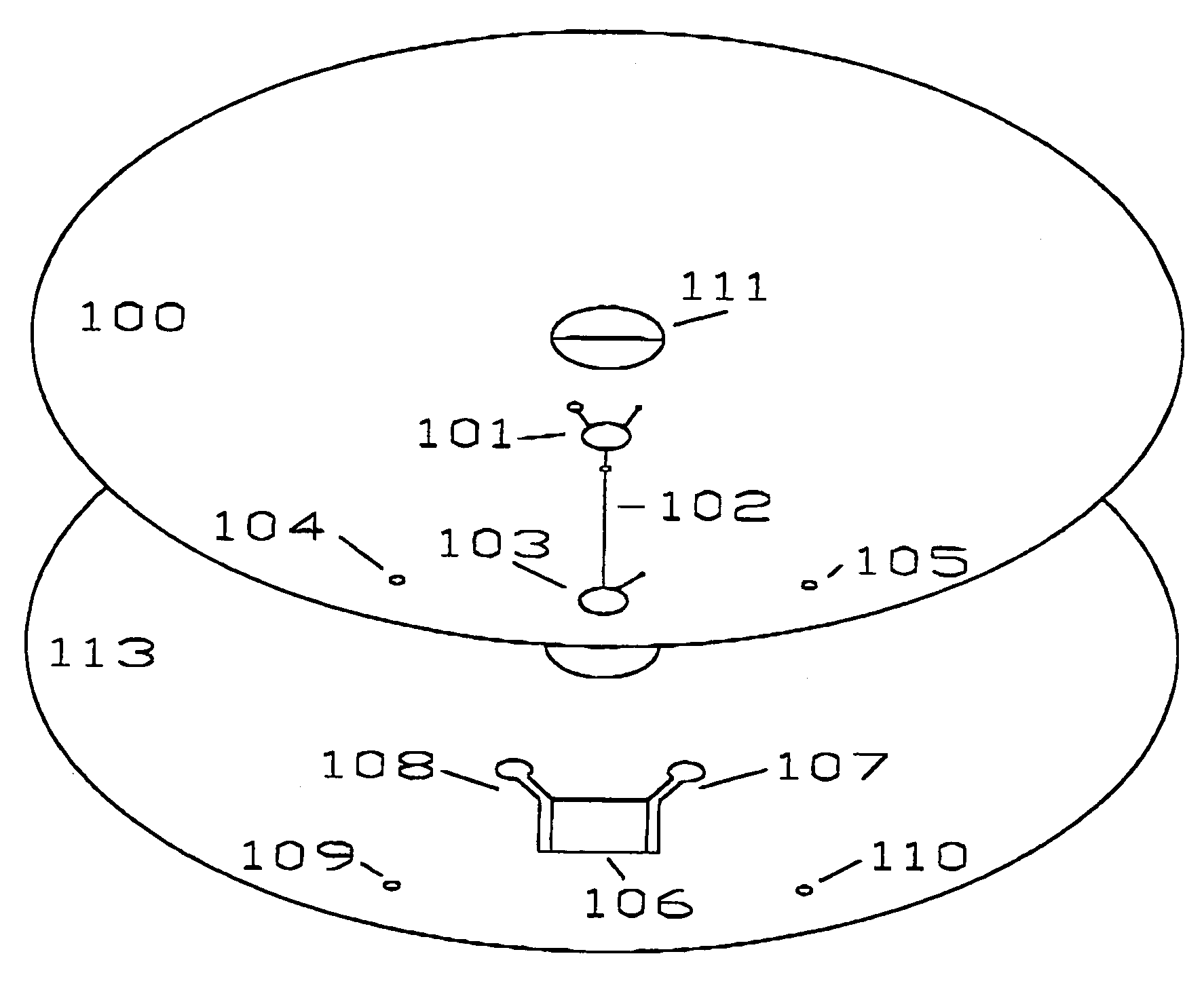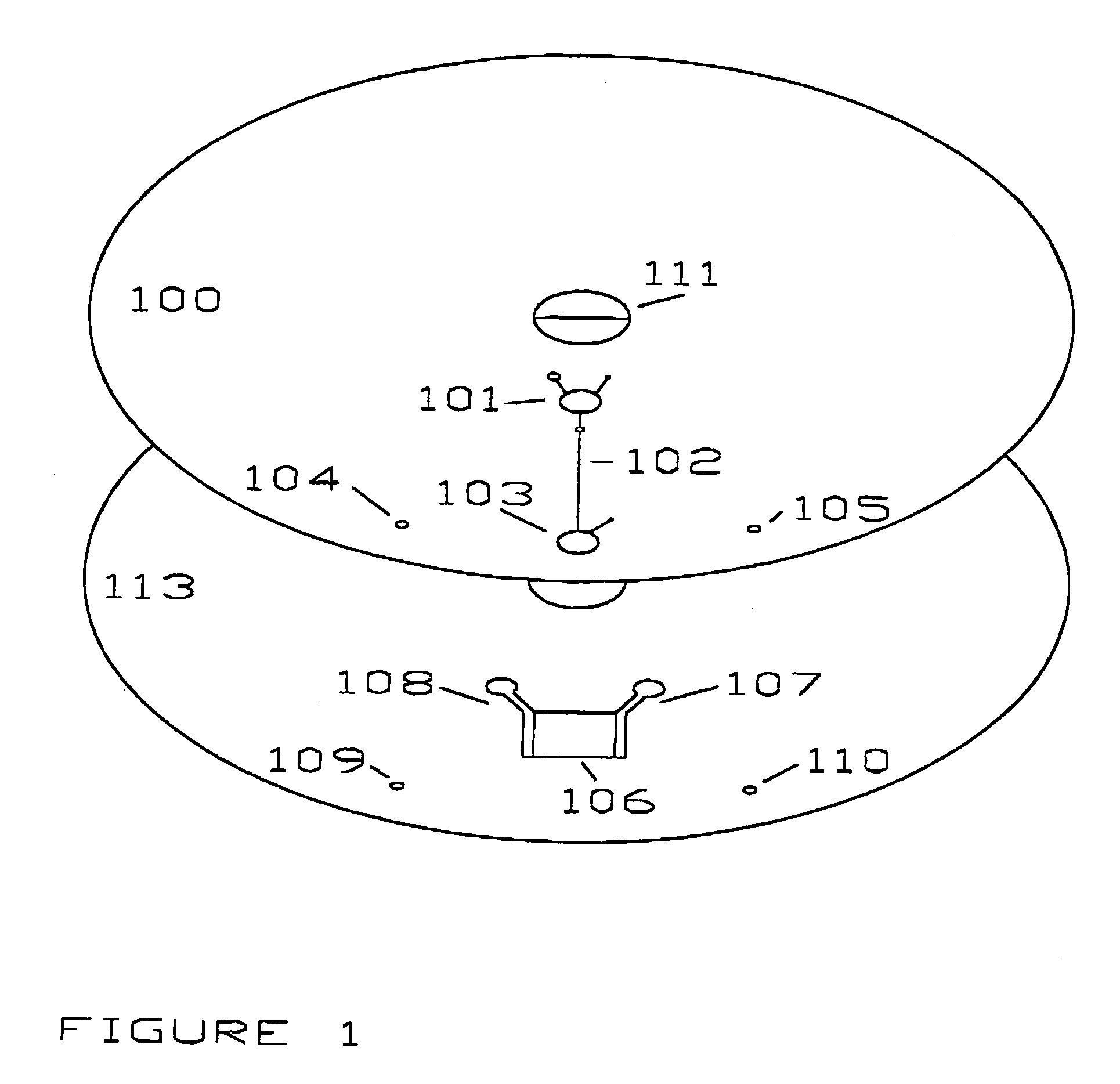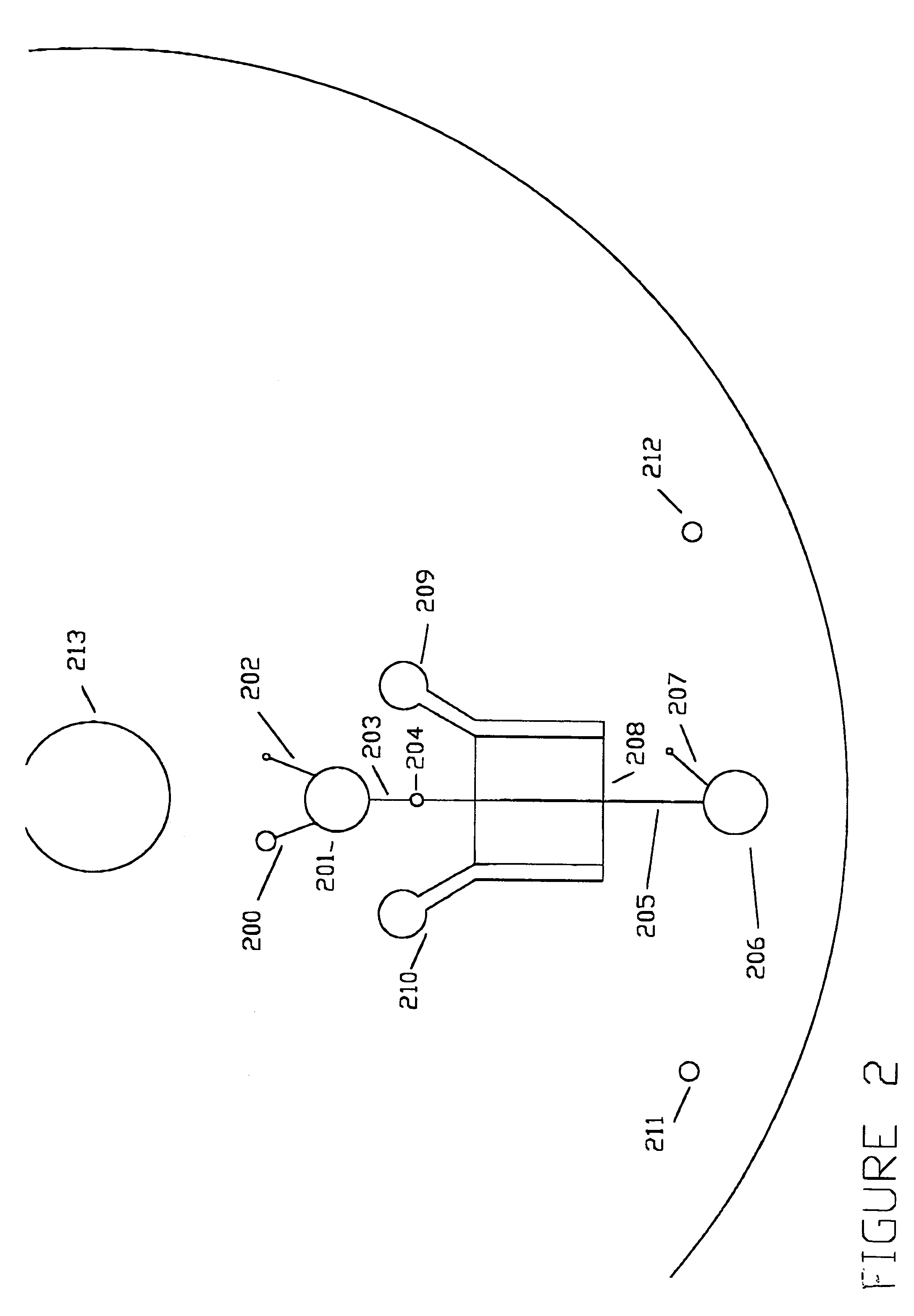Centripetally-motivated microfluidics system for performing in vitro hybridization and amplification of nucleic acids
a microfluidics and in vitro hybridization technology, applied in the direction of biochemistry apparatus, biochemistry apparatus and processes, chemical methods analysis, etc., can solve the problems of limiting the usefulness of these devices, the difficulty of designing systems for moving fluids on the microchip, and the 10-100 m rang
- Summary
- Abstract
- Description
- Claims
- Application Information
AI Technical Summary
Benefits of technology
Problems solved by technology
Method used
Image
Examples
example 1
Microplatform Disk for DNA Hybridization
[0087]A series of hybridization reactions performed to determine the optimum hybridization stringency conditions between a probe molecule and a specific gene sequence is performed using the microsystems platform shown in FIG. 4. A denatured hybridization mixture comprising the probe, the specific gene sequence, salts, buffers, detergents and hybridization facilitating agents such as dimethylformamide is applied to fluid holding chamber 401 at rest. The platform is then rotated at a first rotation speed sufficient to overcome capillary microvalve 404 and the hybridization solution traverses microchannels 405 and is deposited in substantially equal volumes into hybridization chambers 406. Heating elements 407 are independently operated at a series of incrementally different and increasing temperatures, so that hybridization is achieved over a range of temperatures from ambient to a temperature at which no hybridization occurs. After the hybridiz...
example 2
Microplatform Disk for DNA Amplification
[0088]An amplification reaction is performed on the microsystems platform disclosed in FIGS. 5 and 6 as follows. While the disk is stationary, 10 μL of a fluid reaction mixture containing template DNA, PCR amplification primers, deoxynucleotide triphosphates, and thermostable polymerase in a buffer solution in which the reaction may proceed are applied to fluid input port 500. As the fluid fills fluid holding chamber 501 air is displaced through air displacement channels 502 and 507; in this example, 501 has a diameter of 0.4 cm and a depth of 0.3 cm and 10 μL fills approximately 25% of the volumetric capacity of fluid holding chamber 501. Fluid also flows into microchannel 503 until it reaches the capillary microvalve 504 or optional sacrifical valve 504. Once loaded, the platform is briefly rotated at about 3000 rpm to overcome the capillary microvalve, or optionally the sacrificial valve is opened, and then the rotational speed is lowered t...
PUM
 Login to View More
Login to View More Abstract
Description
Claims
Application Information
 Login to View More
Login to View More - R&D
- Intellectual Property
- Life Sciences
- Materials
- Tech Scout
- Unparalleled Data Quality
- Higher Quality Content
- 60% Fewer Hallucinations
Browse by: Latest US Patents, China's latest patents, Technical Efficacy Thesaurus, Application Domain, Technology Topic, Popular Technical Reports.
© 2025 PatSnap. All rights reserved.Legal|Privacy policy|Modern Slavery Act Transparency Statement|Sitemap|About US| Contact US: help@patsnap.com



